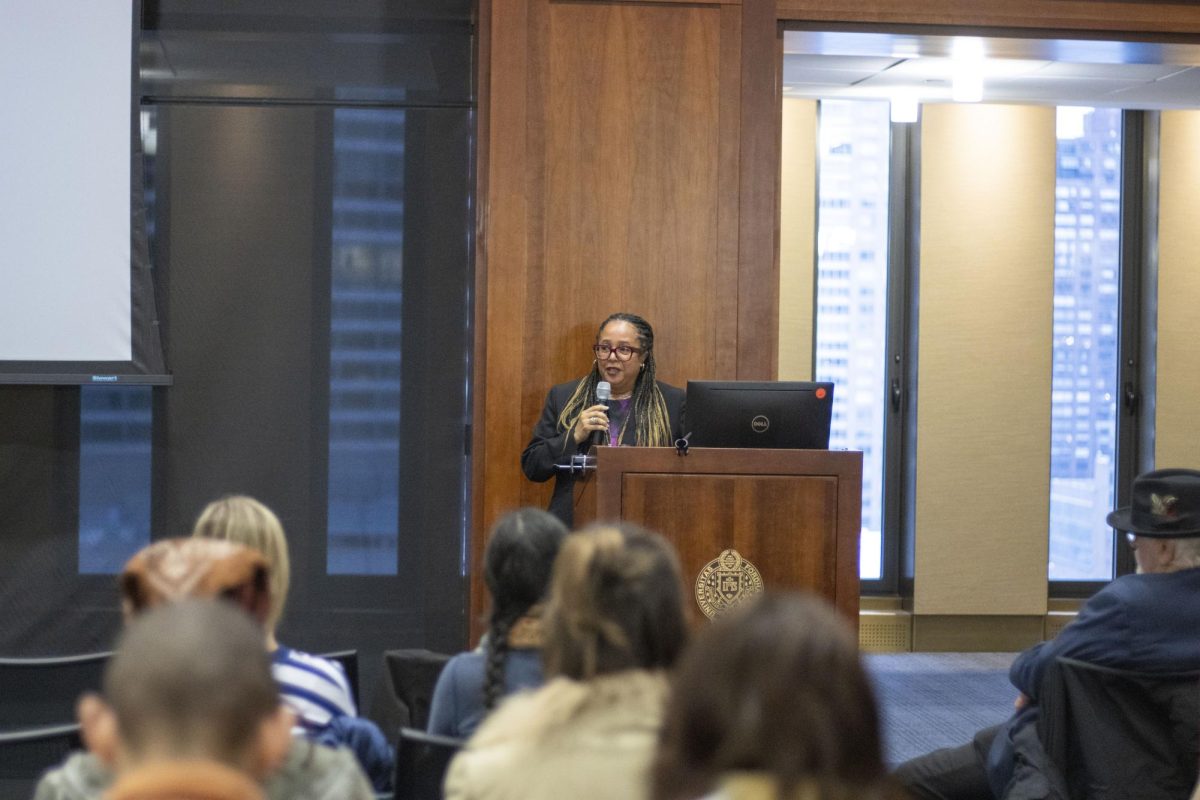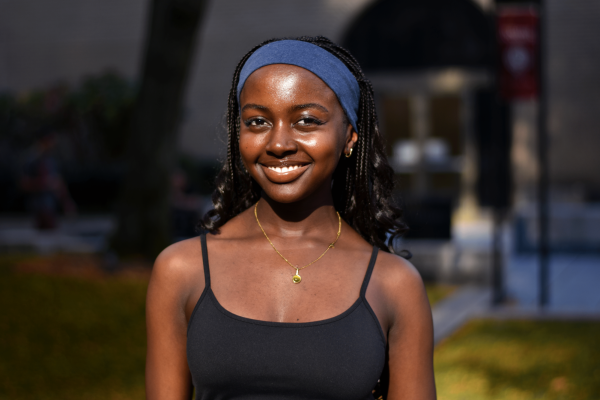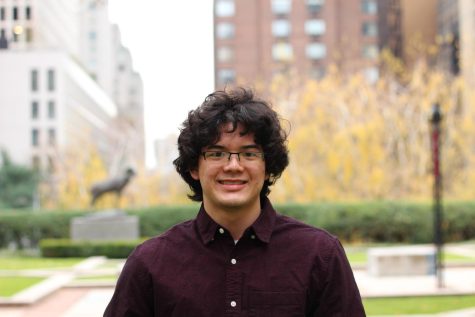The African & African American Studies department at Fordham organized their annual Black History Month lecture on Feb. 11 at the Fordham Prep Theater. The featured speakers explored the complex intersections of race, politics and the criminal legal system.
The lecture was organized by professors Laurie Lambert and Tyesha Maddox and led by Christina Swarns, executive director of the non-profit organization, the Innocence Project.
Founded by law students at the Benjamin N. Cardozo School of Law at Yeshiva University in 1992, the Innocence Project led a nationwide movement to encourage the use of DNA evidence to exonerate individuals falsely accused of crimes. Swarns said that scientific advancement has allowed the people at the Innocence Project to make what they have accomplished possible, but that legal and political hurdles remain active issues.
The focus of Swarns’ discussion touched upon how wrongful convictions disproportionately burden Black Americans. She also talked about her determination to reform America’s criminal legal system, pointing out how the role of the Innocence Project has been pivotal in exonerating individuals wrongly accused of crimes, specifically with the help of DNA evidence.
The lecture reminded students that social movements are ongoing processes that require engagement and devotion, emphasizing possibilities of reform outside of elections.
“The introduction of science as DNA really revolutionized the criminal legal system,” Swarns said. “Before the science of DNA entered the room, an eyewitness identification was considered just rock solid, right? … and all of a sudden, DNA comes in and shows that an eyewitness identification is often getting it wrong,” Swarns said.
Swarns also touched on key issues in the justice system, such as wrongful convictions, racial injustice and the ongoing barriers that come with achieving justice.
Swarns explained her journey to criminal justice and her work at the Innocence Project. Swarns started her work in criminal justice by volunteering at the Innocence Project after law school and continued her work there, eventually becoming the executive director.
The lecture reminded students that social movements are ongoing processes that require engagement and devotion, emphasizing possibilities of reform outside of elections.
Swarns said a major obstacle to exoneration is the poor preservation of evidence in decades-old cases.
“One big thing we’re doing for really old cases is that a lot of times the evidence hasn’t been preserved appropriately,” Swarns said It’s been destroyed and so people who may legitimately be innocent, we don’t have the ability to prove them innocent because the evidence has been destroyed.”
Lambert said the most eye-opening part of the lecture for her was Swarns’ recounting of Buck v. Davis in 2017. Swarns argued against Duane Buck’s death sentence due to a racist expert’s testimony at the time of his prosecution in 1997. The case was revisited and deemed unconstitutional due to the expert witness citing Buck’s being black as evidence that he was dangerous.
Lambert said she was struck by Swarns’ description of how fear built over generations of racist violence in Arkansas.
“The anecdote she shared about the case in Arkansas where Black people were really resistant to show up at the courthouse for any reason because of a really long history of lynching there really stuck with me because it was incredible that some of the people who were afraid to go there probably didn’t even know that that was the reason why historically,” Lambert said.
“It’s important for students to show up and educate themselves about what’s going on. As said, it’s important to vote.” Professor Laurie Lambert
Swarns said there is an urgent need for accountability within the justice system to prevent disproportionate wrongful convictions of Black people.
“Accountability I think is the big thing that we don’t have, right?” Swarns said. “If a defense lawyer messes up and causes a wrongful conviction, if a prosecutor messes up and causes a wrongful conviction, if a police officer messes up and causes a wrongful conviction, there is no consequence to them for that.”
Swarns advised students seeking to make an impact to consider practicing law as public defenders.
“Be a public defender,” Swarns said. “I was a public defender for many years, and that’s the best way to learn the system up close and personal, and then of course join an Innocence Project of us around the country…. there’s a lot of us, so work with us, join us.”
Lambert added that education and civic engagement is crucial when working towards criminal justice reform.
“It’s important for students to show up and educate themselves about what’s going on. As said, it’s important to vote. It’s important to show up to jury duty. It’s important to learn the history,” Lambert said.
At the assembly’s conclusion, discussions among participants created greater insight into issues of racial justice, political engagement and reform measures within the criminal justice system. During the discussions students and instructors engaged in meaningful dialogue that contests dominant discourse and fosters active measures. Lambert outlined this vision.
“It’s important to to learn the history of places that we belong to and that we be in community with each other so that we really start to see each other as people and neighbors and do what we can to take care of each other and prevent these situations where we’re willing to kind of throw people away, which is what incarceration and particular wrongful incarceration does,” Lambert said.



